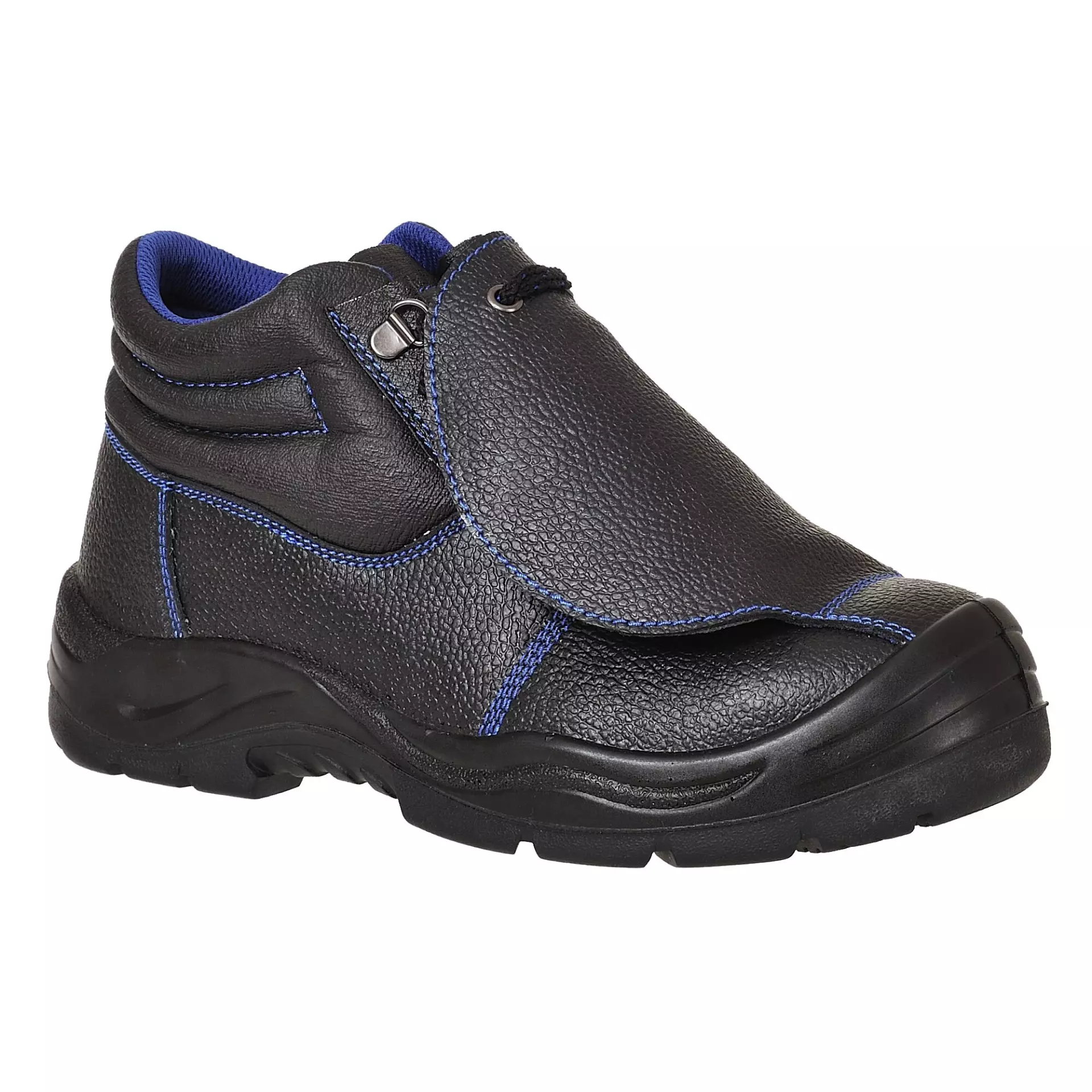
Features You'll Love

Outsole Properties · Shock Absorbing
Shock-absorbing soles provide cushioned comfort, reducing impact and foot fatigue for all-day wear.

EN 20345 · S3, M
Provides 200-joule impact-resistant toe protection, a fully enclosed heel, antistatic properties, and a shock-absorbing heel. Also includes a water-resistant upper, a penetration-resistant midsole, and a cleated outsole for enhanced grip.
Provides extra protection for the top of your foot against heavy impacts and compression. This guards the metatarsal bones from falling objects or crushing injuries, which is ideal for work environments with risks from above.

EN 20345 · HRO
This footwear features a heat-resistant outsole that protects against brief contact with surfaces up to 300°C for one minute. It is ideal for work environments like road construction, welding, or in the metallurgical industry.
Portwest
Steelite Metatarsal Boot S3 HRO M, Black
Steelite Metatarsal Boot S3 HRO M, Black
(19)
57,72 €
Choose size
Shipping fee is 7,95 € for orders under 80,00 €
Features You'll Love

Outsole Properties · Shock Absorbing
Shock-absorbing soles provide cushioned comfort, reducing impact and foot fatigue for all-day wear.

EN 20345 · S3, M
Provides 200-joule impact-resistant toe protection, a fully enclosed heel, antistatic properties, and a shock-absorbing heel. Also includes a water-resistant upper, a penetration-resistant midsole, and a cleated outsole for enhanced grip.
Provides extra protection for the top of your foot against heavy impacts and compression. This guards the metatarsal bones from falling objects or crushing injuries, which is ideal for work environments with risks from above.

EN 20345 · HRO
This footwear features a heat-resistant outsole that protects against brief contact with surfaces up to 300°C for one minute. It is ideal for work environments like road construction, welding, or in the metallurgical industry.
Product description
Professional safety boot featuring leather upper construction with integrated steel toecap, midsole, and metatarsal protection for comprehensive foot safety in heavy-duty industrial environments. The heat-resistant outsole withstands temperatures up to 300°C while providing superior slip resistance, fuel and oil resistance through its dual-density rubber construction. Additional protective features include flame-resistant stitching, spark-resistant leather flap, and anti-static properties, all certified to EN ISO 20345:2022 +A1:2024 S3 standards.
Product Features:
- Leather upper with protective leather flap to guard against sparks
- Integrated superior metatarsal protection with tough steel cover
- Padded collar for added comfort
- Flame resistant stitching
- Dual density sole unit
Technical Details:
- Protective steel toecap
- Pierce resistant steel midsole
- Heat resistant outsole 300°C
- Slip, fuel and oil resistant rubber outsole
- Anti-static footwear with energy absorbing seat region
Standards:
- CE certified
- EN ISO 20345:2022 +A1:2024 S3 (SR FO M HRO)
- TUV SUD Danmark
- DK-PPE001159 i01